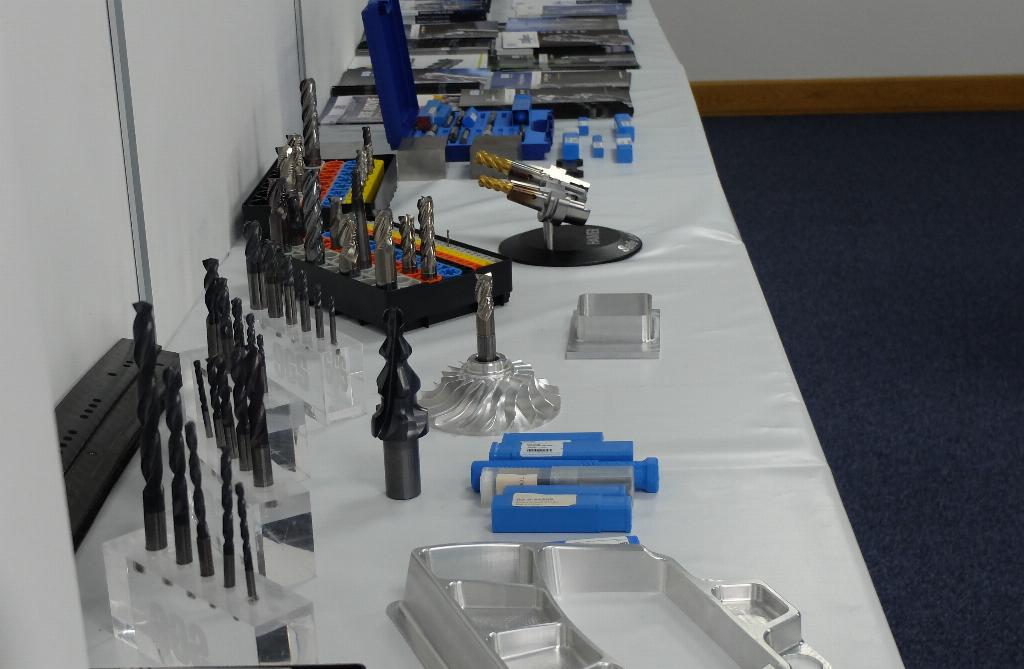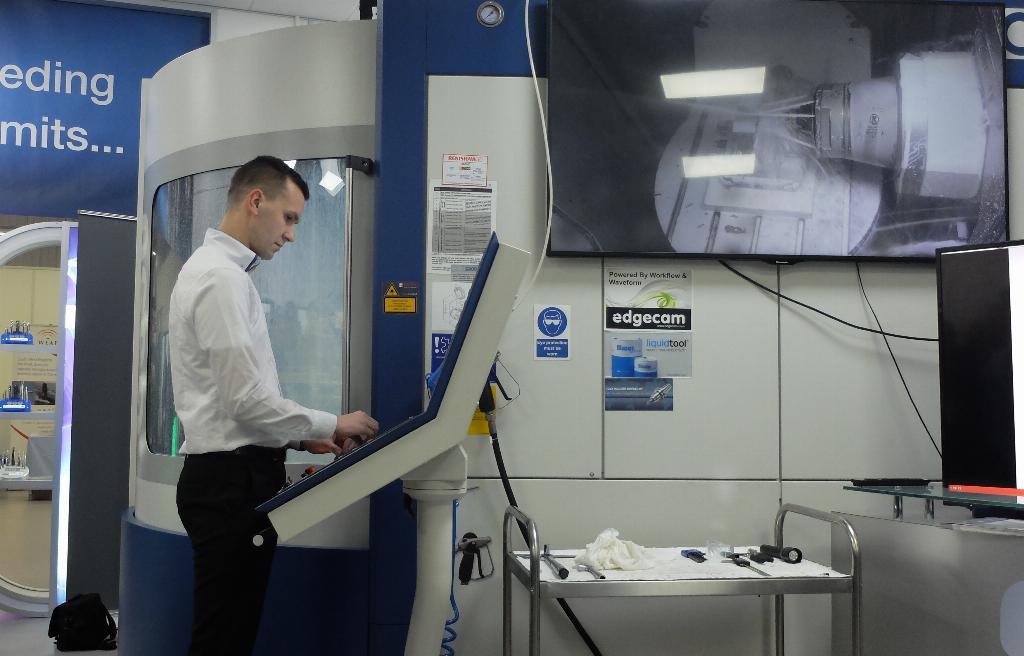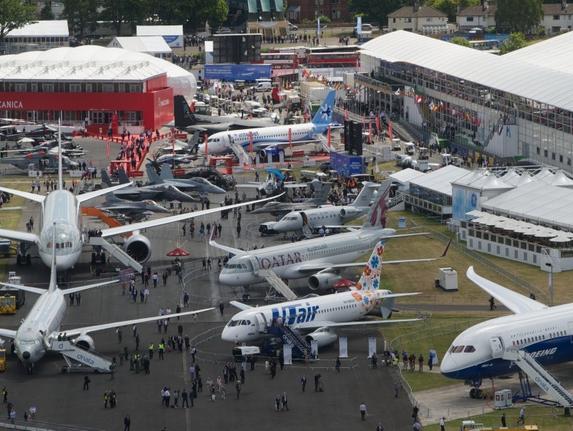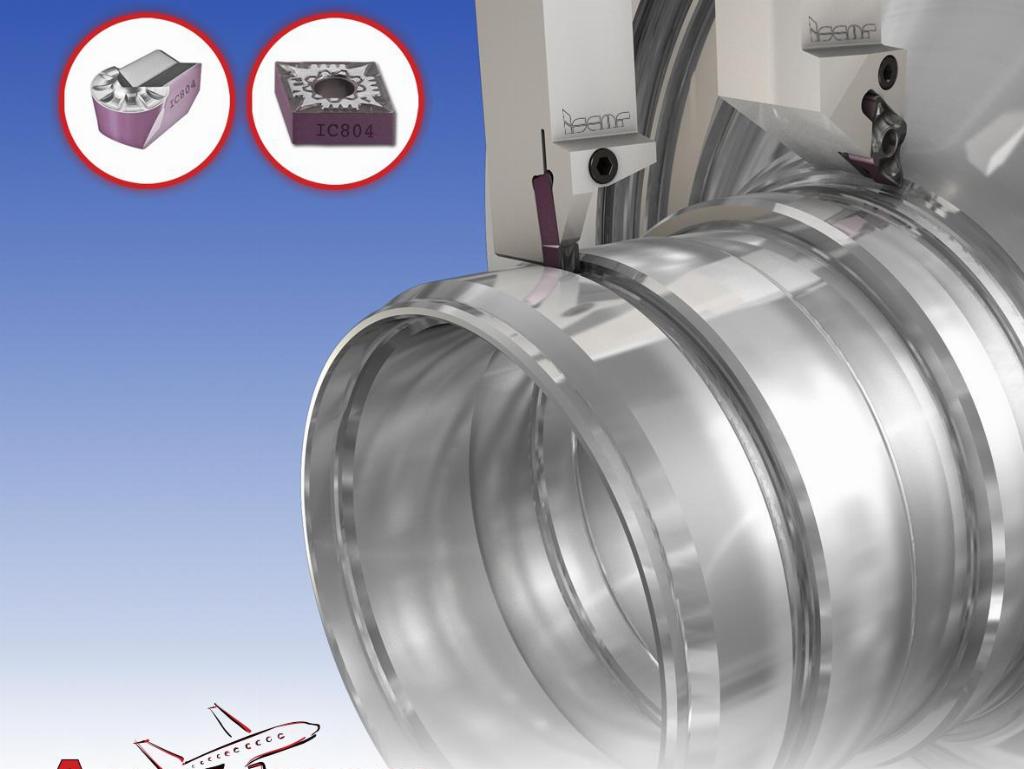A flight path to efficient aero part production

Tooling manufacturer Kyocera SGS held a ‘Lunch and Learn’ event recently to focus on the challenges of machining advanced metallic materials used in aerospace manufacturing. Ed Hill reports.
It is often said that if UK manufacturing is going to be successful it has to focus on advanced manufacturing processes where it has a wealth of knowledge and expertise. To help pass on some of that knowledge, cutting tool specialist Kyocera SGS invited customers to its Technical Centre in Wokingham to hear about the latest R&D in cutting metals used in aerospace production.
The seminars and tour of the company’s facilities was staged in conjunction with the West of England Aerospace Forum (WEAF), the Advanced Manufacturing Research Centre with Boeing (AMRC) and also included the participation of partner companies: Grob, Edgecam, Wogaard, CGTech, LMG Solutions, MST, Showa and Alicona.

The event included advice from experts at the AMRC on machining titanium and exotic nickel alloys used in aerospace applications and machining demonstrations of a titanium component on a Grob G350 universal 5-axis machine using Kyocera SGS cutting tools and Waveform toolpath software from Edgecam.
Guests were also given a tour of the cutting tool manufacturer’s Technical Centre including the manufacturing department for special tools produced at the site, as well as design and coating facilities.
The AMRC experts included James Needham, head of machining applications, and project engineer Chris Bellamy.
The AMRC was established in 2001 as a collaboration between the University of Sheffield and the aerospace OEM Boeing. Since its inception, it has expanded rapidly at the Advanced Manufacturing Park in South Yorkshire. The centre can be approached by any manufacturing business to become more competitive through the application of new techniques, technologies and processes it has carried out in its research.
Kyocera SGS is a tier 1 partner of the AMRC and works with the organisation to develop more efficient machining methods using the latest developments in tooling technology.
Heat resilient but harder
Speaking to attendees at the event Mr Needham outlined some of the challenges for subcontractors faced with the task of making challenging aerospace parts from today’s nickel superalloys.
He explains: “The development of new nickel superalloys is driven by the demand to improve jet engine performance. Customer demand and the airline industry want lower fuel consumption, longer range, safer, faster, cleaner and quieter engines that can operate at higher altitudes. All this leads to engines operating at higher temperatures – and this means engine materials have to maintain their strength and performance at these higher temperatures. Unfortunately, the same properties that give us all these performance advantages also make the materials harder to machine. In the future these alloys are only going to get more exotic and more difficult to process.”

Mr Needham told delegates how the AMRC with its partners had carried out research to look into driving down costs and reducing the waste created when machining structural and rotational parts found in aerospace.
Often complex, thin walled parts with large pockets mean around 90% of material has to be removed from the workpiece to produce the finished component. Mr Needham described this as the very large ‘buy to fly’ ratio of producing the component from the raw alloy material.
“A lot of machining of these materials is slow and difficult and can mean spending hundreds of hours machining material off the workpiece, on an expensive machine, with high consumable costs,” he affirms.
He went on to say that often less efficient processes were ‘locked down’ by subcontractors for many years because they were certified and it was difficult to carry out further trials and research because companies were understandably focused on day-to-day production. This is where he hoped the research carried out by organisations such as the AMRC would be helpful.
“The question is can the supply chain machine these new materials at a rate and efficiency that is cost effective? The AMRC exists so that good concept ideas can be validated. We cover the whole range of research, from academic papers through to production applications on a size and scale that could be used by our industrial partners. Not many places can carry out that full spectrum from research to practical solutions.”
Tips on titanium
During his talk on machining titanium aero-structures, Chris Bellamy said that despite the increased use of composite materials in the construction of aircraft titanium amounts were still increasing.
“Composite materials tend to replace aluminium parts rather than titanium and there are some issues with composite and aluminium materials coming in direct contact with each other. At the AMRC machining group we have a team that looks at integrated processes to deliver a step change in aerospace component machining, particularly on titanium and aluminium alloys and primarily milling processes.”
Mr Bellamy revealed how the AMRC’s research was aimed at helping machinists find ways to reduce chatter, tool wear, and find efficient cutting data and toolpath strategies. He concluded that machining titanium was inevitably going to get more difficult as the aerospace OEMs designed more complex and difficult parts to manufacture.
“We anticipate that we will see more complex forms,” he says. “OEMs are looking at more bionic shapes and structures, so there will be less prismatic or geometric parts than we see at the moment. There will also be new cutting tool materials, a shift to produce near net shapes to reduce waste and a drive to avoid roughing out large amounts of titanium so we can machine off as little as possible as fast as we can.

“There will also be an increase in more flexible machine tools that can deal with these complex part shapes, as the older 3-axis approach may just be too difficult for these new complex shapes to be machined efficiently. It may only be possible on 5-axis mill-turn type machines.”
Mr Needham concluded that the AMRC research was aimed to give solutions for its partners whatever the circumstances of their production environment. It was a matter of revealing the cost benefit analysis of the data it produced.
“This data is a tool that we have compiled to help our partners get the most useful process for their needs,” he reveals. “There is no ‘best’ solution because everyone has slightly different challenges and circumstances, different machine tools, cutting tools, materials, components and business models.
“The rationale behind our work is to create a set of data so that you can know for a given process, a given cost rate to produce that component. It may be because you want to lower the cost you spend on consumables or it may be because you want the lowest cycle time; it all depends on the particular challenges that each manufacturer is faced with. We can alter the parameters and then work out what will be the most optimal way to approach machining a part for that company.”
Key collaboration
A key aim of the event according to Kyocera SGS was the need for increase collaboration between, manufacturing companies, academics and suppliers to help come up with more efficient processes when machining parts.
Alan Pearce, managing director, SGS Tool Europe comments: “We have invested in this event because a lot of our success is due to collaboration we have carried out with our partners here today. We have had a very successful partnership with the AMRC and other Catapult centres.
“We face challenging times in manufacturing in the UK, but there are also great opportunities, particularly in terms of exporting, so I would encourage the industry to work in partnership more to optimise the processes that we use now. If we don’t do that it is going to be difficult to compete. To maintain our competitive edge we must not be afraid to introduce change.”
Kyocera SGS
www.kyocera-sgstool.eu/














